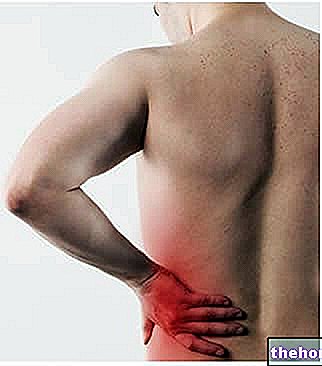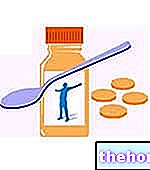
In the literature there are not many studies on male Binge Eating Disorder, as generally the samples observed are female or mixed, therefore, the pathological description reported in this chapter will not distinguish between the two sexes.
associated with at least three of the following symptoms:- Eating much faster than normal
- Eating until feeling uncomfortably full
- Eating large quantities of food even if you have no appetite or hunger
- Eating in solitude out of shame
- Feeling self-loathing, depression, and guilt after each episode
What triggers binge eating in BED?
Contrary to what happens in bulimia nervosa, binges could represent an escape or an emotional and thought block in the face of an emotional state considered intolerable, or represent a difficulty in managing impulses; similarly, other impulse-related behaviors such as alcoholism, drug addiction, self-harm, kleptomania and sexual promiscuity can be triggered in Binge Eating Disorder.
Food, weight and appearance: how important are they in BED?
From a psychopathological point of view, the polarization of thought on food, weight and physical appearance does not seem as pronounced as in other eating disorders.
Correlations of the BED
In-depth studies show that Binge Eating Disorder has specific genetic correlates, a peculiar socio-demographic distribution between sexes and different ethnic groups, and a "high comorbidity with depression, the prevalence of which in the course of life in these patients is around the 60%. The correlation between Binge Eating Disorder, obesity and weight reduction attempts is still to be precisely defined; according to a 1997 study, excess weight and the consequent use of dietary therapies that regularly occur in Binge Eating Disorder , could be a simple consequence of the pathological manifestation, and not a risk factor as happens for the BN.
Distribution and population of the BED
Currently, Binge Eating Disorder is considered a very common eating disorder and is believed to affect 2-3% of the general adult population. Its prevalence increases in parallel with the degree of overweight; studies carried out on the general population in Italy show that the prevalence of the disorder is estimated between 0.7% and 4.6%, while other studies carried out in the United States report an "incidence of 5% in the obese of the general population, 10- 15% of the obese who use commercial programs to lose weight, 30% of the obese who seek treatment for obesity in specialized centers, and - in those who intend to undergo bariatric surgery - the disorder could exceed 50%. It is believed that this disorder affects most between the second and third decade of life, nevertheless, retrospective investigations have revealed that the loss of control over food begins much earlier than the diagnosis and generally before the age of twenty; this time lapse between onset and diagnosis could partly explain the chronicity of the disorder.
Genetic and family influences of the BED
There are not many studies on genetic influences in Binge Eating Disorder, but some data indicate that the prevalence of the disorder is higher in individuals who have at least one first degree relative suffering from this same disease (60%), compared to families in which this is absent (5%). Small-scale research has not shown a familial tendency or a significant relationship between Binge Eating Disorder and other eating or psychiatric disorders. In another study in which over 8000 Norwegian twins of both sexes were evaluated, Binge Eating Disorder appears to be influenced almost equally by genetic (41%) and environmental (59%) factors, with a slight prevalence of the latter. In a study of molecular genetics on a sample of 469 obese, of which 24 with a mutation of the melanocortin receptor-4 it was shown that all the subjects with this alteration were positive at the diagnosis for Binge Eating Disorder.
Hormonal factors in BED: are they imported?
For years, research has also focused on the possible influence of hormonal factors in the pathogenesis of binge eating, among these the most scrutinized are insulin, adiponectin, leptin and ghrelin, and cannabinoids. The first studies on the family styles of Binge Eating Disorders compare 43 binge eating with 88 subjects suffering from other eating disorders using the Family Environmental Scale; the Binge Eating Disorders obtained lower scores for family cohesion, expressed emotionality, active enjoyment, personal independence ; conversely, they report higher levels of conflict and inter-family control.
Cultural and psychosocial factors of the BED
In the last study mentioned above it was also found that compared to other subjects suffering from other eating disorders, Binge Eating Disorders had a lower cultural level.
Among the psychosocial factors capable of influencing the onset of the disease, concern and dissatisfaction with body image or weight and frequent use of slimming diets were highlighted.
These factors explain 61-72% of the variance of symptoms in men and 70% in women.
For further information: Binge Eating Disorder Symptoms and to various forms of psychotherapy such as: CBT, group IPT, behavioral therapy of obesity and self-help with manuals; despite the reduction in binges, no significant reductions in weight were observed.


























